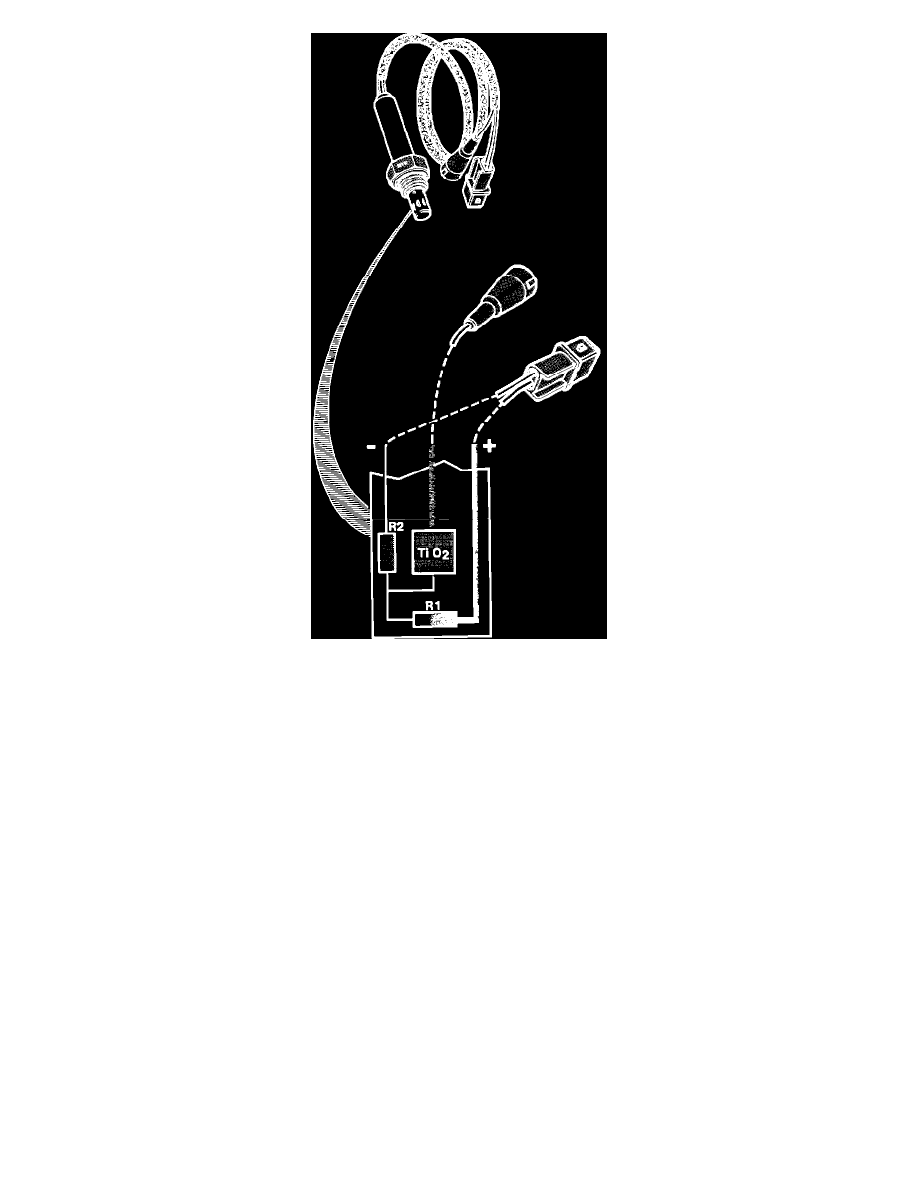940 L4-2.3L SOHC VIN 88 B230F (1992)

Operation Of Oxygen Sensor (Lambda Sond)
OPERATION
This particular model of oxygen sensor is known as a "semiconductor sensor". Its resistance changes depending on the amount of oxygen
remaining in the exhaust gas.
The sensor operates only within a certain temperature range of approx. 392 - 1530°F (200 - 850°C). It is electrically heated to reach its operating
temperature as fast as possible.
When the ignition is turned ON, current is sent to the Positive Temperature Co-efficient (PTC) resistor R1 (heater) whose resistance increases as
temperature increases. The current then separates with part going to resistor R2 and a constant 1.2V being feed to the oxygen sensor.
The exhaust gases reach the outer surface of the oxygen sensor tip via the openings in the protective sleeve, this changes the resistance in the
sensor, altering the voltage read by the ECU.
SIGNAL
The sensor signal voltage is in direct proportion to the amount of oxygen in the exhaust gases. This depends on the air/fuel ratio. A "Lambda"
value of 1 represents the theoretically perfect ratio. A rich mixture results in a higher voltage then a lean mixture.
The voltage signal sent by oxygen sensor varies between 0.1 - 1.2V. The fuel injection ECU uses this information to adjust the amount of fuel
injected.
The oxygen sensor signal gets disregarded by the ECU at and immediately after start-up and at full load (throttle switch position).
